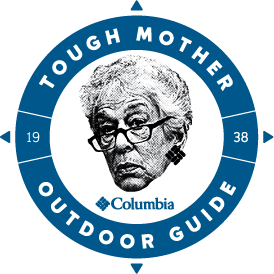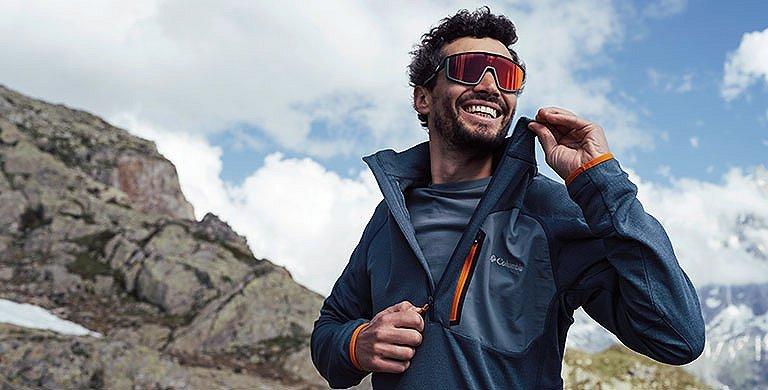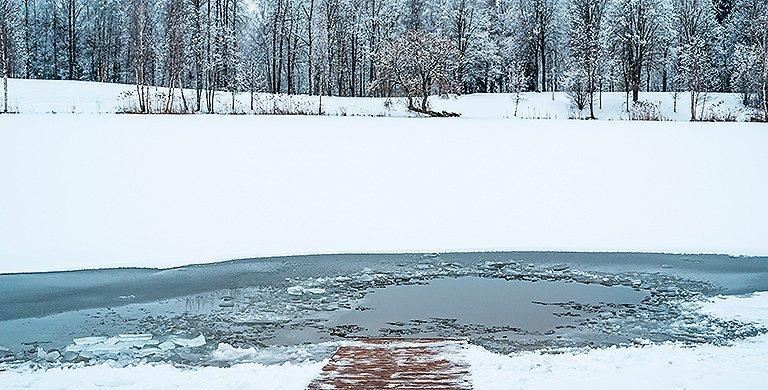OUTDOOR LIFE
Via Feratta: Step into the Vertical World
Shift your adventure from horizontal to vertical.
BY: NANCY BOUCHARD
What you’ll find in this article:
What are Via Ferratas?
Why Climb a Via Ferrata?
What are some of the Best Via Ferratas in the US?
What Do I Wear on a Via Ferrata?
Let’s make one thing clear. There’s nothing wrong with flat-land hiking and keeping both feet on the ground. But if you want to explore vertical terrain without the commitment of mastering the intricacies of rock climbing (ropes, harnesses, belay devices, tight shoes, and all that annoying, unintelligible lingo), then a Via Ferrata might be for you.
Why Climb a Via Ferrata?
What are some of the Best Via Ferratas in the US?
What Do I Wear on a Via Ferrata?
Let’s make one thing clear. There’s nothing wrong with flat-land hiking and keeping both feet on the ground. But if you want to explore vertical terrain without the commitment of mastering the intricacies of rock climbing (ropes, harnesses, belay devices, tight shoes, and all that annoying, unintelligible lingo), then a Via Ferrata might be for you.
What is a Via Ferrata?
Via Ferrata an Italian term that roughly translates into “Iron Path.” The practice of equipping steep terrain with ropes and ladders has been around for ages, with ancient peoples seeking high terrain for food storage, security, and guarding their villages. By the 1700s in Europe, explorers and mountain guides were using ropes and carved steps to reach remote summits. The modern via ferrata was developed during WWI, when soldiers in Italy and Austro-Hungary drilled iron hand and footholds into the vertical limestone cliffs of the Southern Alps to move quickly (and undetected) through mountainous terrain. Nowadays, these routes and thousands more like them are used for recreation, with hand and footholds protected by thick steel cables to which you are always attached.
Why Climb a Via Ferrata?
The point is that you have the thrill of getting high (up), into terrain that used to be the exclusive playground of alpinists, eagles and mountain goats, in a safe, controlled manner. If you can climb a ladder, you can ascend a via ferrata. Sure there’s exposure—which, along with spectacular scenery and exercise--is the point. But you’re protected from a fall by easy-to-use equipment (and the cables), and there are foot and handholds to show you the way. And you can opt for short routes that take an hour or so, with less-than vertical terrain, or commit to all-day adventures. It’s like starring in your own version of Free Solo
without the risk. Even seasoned rock climbers enjoy this alternative way of moving through the mountains.
Where Can I Find a Via Ferrata?
In Europe, via ferratas are everywhere, especially in the French, Italian and Swiss Alps. There, you’ll see multi-generational families, people age 8 to 80 enjoying the routes. While there are more than 2500 via ferratas in Europe alone, it’s a relatively new activity in the US. Changes in rules that govern national public lands have allowed many ski areas and communities to develop via ferratas to enhance tourism. In Europe, most via ferratas are free (although you can generally hire a local guide). In North America, there are about 100 via ferratas and while some are open to the public for no charge, the majority are on private land (or land leased from the US Forest Service by ski resorts) and require a guide. The good thing is that guides know where to go, provide equipment, and will teach you everything you need to know. In addition to expertise, they inspire confidence. You can sign up as an individual, with your family, or a group of friends. You don’t have to be a world class athlete; but good physical fitness is a plus.
You’ll find via ferratas around the world with new ones going in every year. Here are some of our favorites in the US.
Telluride Via Ferrata, Telluride, Colorado
This via ferrata was built by rock climbers and doesn’t have a continuous cable system (you walk on flat trails between cliff sections), but it does boast some heart-racing exposure on a blank, overhanging section of cliff, 200 feet above the ground. The 1.5 mile-long route, at the end of a box canyon, is on the lower section of 12,785-foot Ajax peak. You’ll get stunning views of the 365-foot Bridal Veil Falls. There’s no charge for using the via feratta; Telluride Adventures can provide gear and guides.
Ouray Via Ferrata, Ouray, Colorado
The small town of Ouray in Colorado’s San Juan Mountains is an adventure sports capital. And you can walk from your hotel to two via ferratas, which are open to the public. It’s built to European standards (meaning there’s always a safety cable to clip into), and the views are magnificent. You’ll ascend more than 4000 linear feet of anchored cable/protected rung-enhanced trail, a 35-foot cable bridge across the Uncompahgre Gorge and a 75-foot “sky” bridge. If you’re new to the support or need to rent gear, contact San Juan Mountain Guides.
Jackson Hole Via Ferrata, Jackson, Wyoming
Jackson Hole is known for its great summer climbing, but even if you’re not up for the Grand Teton, you can climb a via ferrata and explore the alpine environment. Jackson Hole Mountain Resort has installed an extensive network of routes that go up and across the cliffs above the ski area. You ride the Bridger gondola, which is a fun excursion on its own. Then you walk with your guide to routes that are designed for all levels of ability—some very easy, and others that involve more vertical and increased exposure. Groups are guided by Jackson Hole Mountain Guides, but be ready for some sticker shock with pricing.
Tahoe Via Ferrata, Olympic Valley, California
This via ferrata, built into the cliffs above Palisade-Tahoe Resort, traces the 1,000-foot “Tram Face” above the ski resort. Like Jackson Hole Mountain Resort, it’s a private via ferrata, so you have to hire a guide. The geology is beautiful, with golden Sierra Nevada granite underfoot and great panoramic views of the majestic views.
Mammoth Mountain Via Ferrata, Mammoth, California
Mammoth Mountain is more than a winter ski resort. Summers and fall are terrific times to hike, and if you visit, don’t miss the Via Ferrata on the cliffs below the Caldera Overlook. You’ll ride up the Panorama Gondola and ascend routes that trace the cliff bands. There are a handful of options, but we like The Nose, named after the eponymous feature in Yosemite. While you need a guide, half-day, non-weekend rates are quite affordable.
Royal Gorge Via Ferrata, Royal Gorge, Colorado
Just 130 miles from Denver is the Royal Gorge, a dramatic 1,250-foot deep, six-mile-long section of canyon on the Arkansas River. The impossibly narrow canyon is bracketed by steep granite cliffs, and surprisingly, a well-developed adventure park with a bridge that spans the gap, a zipline, big swing, gondola, and a 1000-foot via ferrata that ascends a steep, 500-foot arete. The park is open year-round, weather permitting.
NROCKS Via Ferrata, Circleville, West Virginia
NROCKS is named after the North Fork of the South Branch of the Potomac River. The Via Ferata is about a mile in length, with heights that extend to nearly 300 feet from the valley floor. Highlights include a 200-foot-long swinging bridge and picture-perfect views of the Allegheny mountain range. Our favorite outing is the full moon tour; you’ll have a headlamp, but on a clear night, you won’t need it.
Red River Gorge Via Ferrata, Red River Gorge, Kentucky
The “Red” is one of the most famous climbing areas on the planet. But you don’t need to be a climber to enjoy the pristine sandstone. The Via Ferrata is owned and operated by Southeast Mountain Guides. There are routes for all skill levels; you can exit from each section if you decide you’ve reached your vertical limit. Rates are reasonable compared to many of the ski resort locations, and highlights include a 70-foot-long suspension bridge and lofty platform with bird-eye views of the gorge.
What to Wear When on a Via Ferrata
Planning a via ferratta experience? Check out Columbia's hiking gear to get started. Like most outdoor sports, one of the tough questions is what to wear. There are no hard and fast rules, as much depends on conditions and weather. Here are some tips for apparel and footwear that will let you focus on the route. Remember, bright is right in the mountains, both for photos, and for visibility.
Sturdy Shoes
You’ll want comfortable, well-fitting hiking shoes. You’ll walk to the base of the via ferrata, climb and descend in the same pair of shoes, so get something that’s good for walking. Pick a pair with a relatively stiff sole (not a flat soled tennis shoe or foam-soled running shoe), with good grip so that you’ll have friction on the trail, rock and rungs. We like the Redmond BC Hiking Shoe (it comes in men’s, women’s and kid’s models) as it offers excellent support, added toe protection and great durability. Also, the Omni-Grip outsoles provide superb grip, regardless of the angle of terrain.
Long Pants
You don’t want to be weighed down by your apparel, but you also don’t want to get cold (after all, most via ferratas are in the mountains). Pick a pair of hiking pants that are fairly close fitting at the ankles (no bell-bottoms) as you need to see your feet. You’ll want enough stretch so you can make high steps from rung to rung. Our friends who guide Via Ferratas love hiking pants made of lightweight, durable nylon fabric with technologies like Omni-Shade (to protect you from UVA/UVB rays), and Omni-Shield to repel moisture and dirt.
Technical T
On top, you’ll want a short sleeve technical T (pick nylon or polyester over cotton as you may get sweaty and “technical” fabrics dry quickest). We suggest the women’s Leslie Falls Short Sleeve
(pick the “Juicy” colorway so you’ll pop in photos) and Men’s Tech Trail Crew Neck.
Water and Wind Resistant Jacket
Add a packable, water and wind resistant jacket, just in case the weather turns. We like ones with zippered hand or chest pockets to keep your mini camera (or phone) secure, out of the way, and easy to reach.
Interested in experiencing a via ferrata for yourself? Gear up for your adventure with hiking gear from Columbia Sportswear



